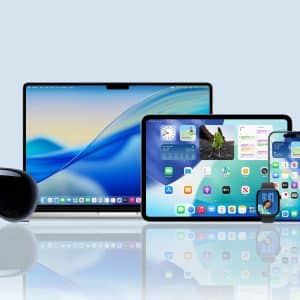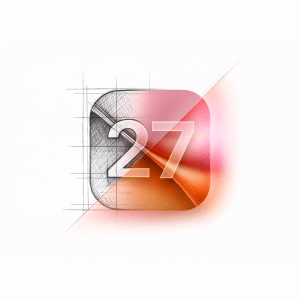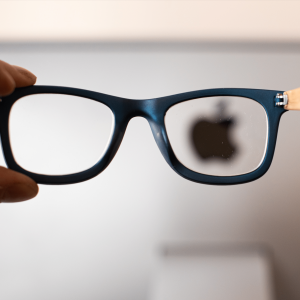Keith A. Bockwoldt is not an Apple salesman, but sometimes he feels frustrated that this might be the impact he has on educators.
As the director of technology services for Illinois’ second-largest high school district, Mr. Bockwoldt has hosted a steady stream of more than 1,000 visitors who want to learn how Township High School District 214–25 miles northwest of Chicago–developed its 1-to-1 computing initiative, which ultimately chose iPads, and the positive impact that device decision is having.
“It’s not about the device; it’s about transforming learning,” Mr. Bockwoldt tells everyone who will listen.
But he notices that about half his visitors usually leave convinced that they don’t need to really use his 12,000-student district’s process for vetting the effectiveness of various digital devices. Rather, they simply leave the visits “sold” on the power of iPads.
From Los Angeles to Illinois to Maine–where Apple products far outpaced Hewlett-Packard in districts’ choices through the state’s bulk-purchasing program earlier this year– iPads are hot. In fact, they command nearly 94 percent of the tablet market in K-12 schools, according to Tom Mainelli, the research director focusing on the tablet market for IDC Research, a San Mateo, Calif.-based firm that provides market analysis of technology.
By the end of this calendar year, total shipments for tablet computing devices in the U.S. education marketplace are expected to exceed 3.5 million units–a 46 percent increase over 2012, indicated Mr. Mainelli, who explained that the research is proprietary and declined to name the runners-up in the tablet race. The figure covers tablets in higher education and K-12, but colleges and universities account for a much smaller proportion because, at that level, most are personal devices.
High Market Share
Apple Inc.’s CEO, Tim Cook, drew attention to his company’s dominance during an earnings call with analysts in October. He said that such a high market share was “unheard of,” and that it was “great to be making a contribution to education.”
Education’s contribution to Apple is also noteworthy: The company set a record in education sales for the fourth quarter, generating $1 billion in revenue with sales of its iOS and Mac products.
However, Apple’s king-of-the-hill market position in tablets is being eroded by various players–most recently by Google, with its official launch Nov. 13 of the Google Play for Education app store, delivered now on Nexus 7 tablets and intended to compete with the educational applications available through Apple. Priced at $229, with a $30 management charge per tablet, the Google device allows teachers to pay using a purchase order loaded on the tablet.
Meanwhile, some high-profile tablet deployments are making headlines, as various issues have arisen that could chill the market.
For instance, the Los Angeles Unified School District recently decided to slow its planned rollout of iPads. The district experienced student breaches of security earlier this year, and other issues arose around device-management policies, the preloaded Pearson curriculum, total cost of iPads and curriculum, and suitability of the devices, compared with laptops, for high school students.
What device to use in a school district is “basically a policy decision, and that can change overnight,” said Sam S. Adkins, the chief research officer of Ambient Insight, a Monroe, Wash.-based market-research firm. “And from a citizen’s standpoint, as a guy who pays taxes, iPads are expensive in light of much cheaper devices now available.”
School business and technology officials often talk about the relatively high price point for iPads.
Mr. Bockwoldt in Illinois’ District 214 said his cost for 12,000 students is $429 per iPad, which includes the case and keyboard. In Maine, where the iPad was the most popular product purchased by districts, 39,457 students and educators received iPads at a cost of $266 per year, per seat. And in Los Angeles, where a math and English curriculum was bundled with the iPad, the expense was reported as $770 per device.
Meanwhile, for Louisiana’s 33,000-student Calcasieu Parish public schools, an iPad II costs $499–a fact that frustrates Sheryl R. Abshire, the chief technology officer there.
“You can get a Google Chromebook for $199,” she said.
Ms. Abshire was surprised to get a recent report from Apple stating that her district is the largest purchaser of iPads in the state, especially since the district only has 5,136 iPads, compared with the 30,043 Dell computers it owns. Most of those iPad purchases were made at the school level, using grants or Title I money, not at the district level, she said.
Ms. Abshire accounted for Apple’s tablet dominance in education by noting it was the first to enter the market, in 2010.
“They seeded their success by pushing out to [app] developers. It’s almost like this went viral when teachers saw the content,” she said. “The iPad has a deep, entrenched space in the K-12 market because it’s a good product.
“Other people are starting to chip away at that,” she continued. “The prices are lower, and the content is becoming much more available.”
As a board member for the Consortium for School Networking, a Washington-based association for school technology leaders, Ms. Abshire talks regularly with other education technology leaders. They tell her, she said, that “purpose and content” are the main factors driving much of the decisionmaking around new digital devices for students.
Tight budgets are an issue, too, as well as maintaining iPads in a Microsoft Windows environment, which is what most schools have, requires workarounds, or purchasing a mobile-device-management system.
Market Predictions
Whether the iPad will maintain its dominant position in education is difficult to predict, experts say.
“Apple has a pretty robust universe, from its devices to iTunes Uto the app store,” observed Jeff Mao, the director of learning technology policy for Maine’s education department. After 11 years of supporting a statewide 1-to-1 computing program, Maine vetted devices and offered a four-year bulk-purchase option to its districts, which chose to buy 63,585 Apple iPads and MacBook Air laptops, compared with 5,475 Hewlett-Packard ProBook 4,440 laptops, and no HP tablets. Three years from now, Mr. Mao said, Maine will evaluate whatever spectrum of devices meets the state’s instructional needs.
David T. Vinca, the founder and CEO of eSpark Learning, a Chicago-based company with an iPad-centered learning-management system, is banking on iPads for now, although its back end and systems are platform-agnostic.
“It’s our belief that the most engaging educational experiences for students are being created for the iPad,” he said. “The iPad’s dominance has helped us focus and do much better work.”
‘Rich, Diverse Ecosystem’
Every quarter, his team reviews the other options available to see if it’s time to expand the offerings. So far, the company is staying iPad-specific. When a “rich, diverse ecosystem of educational apps and content” is available for another platform, eSpark will make its system available for that device as well, Mr. Vinca said.
Susan Einhorn, the executive director of the Anytime Anywhere Learning Foundation, a Bellevue, Wash.-based organization that supports schools in developing and improving 1-to-1 computing programs, disagrees.
She said that “iPads are a consumer device; I don’t feel they’re really designed for education.” Ms. Einhorn favors tablets with what she calls “greater functionality,” such as Microsoft’s Surface tablet.
As a “technology-agnostic” organization, the International Society for Technology in Education does not take a position on specific devices, but CEO Brian C. Lewis observed that, “within a short period of time, tablets have become almost ubiquitous. What we forget is that, in another three to five years, another new thing will transform not only our world, but what’s happening in the classroom.”
Mr. Lewis said he has heard too many stories of schools and districts that purchased technology before planning how to use it.
Richard Culatta, the director of the U.S. Department of Education’s office of educational technology, agrees.
“An important question now is: What form of device makes the most sense? Is it tablets, or tablets with keyboards, or laptops?” he said.
His office is working on a “connected schools” guide for release early in 2014 to help districts and schools sort through “getting the right device in the hands of students,” he said.
Coverage of the education industry and K-12 innovation is supported in part by a grant from the Bill & Melinda Gates Foundation. Education Week retains sole editorial control over the content of this coverage.
Education Week
(c)2013 Education Week (Bethesda, Md.)












